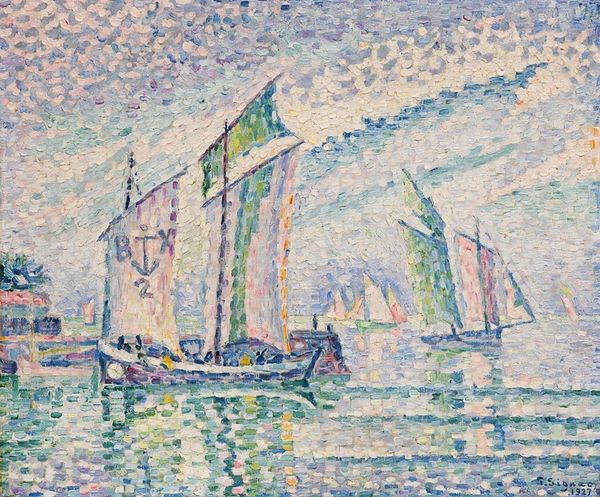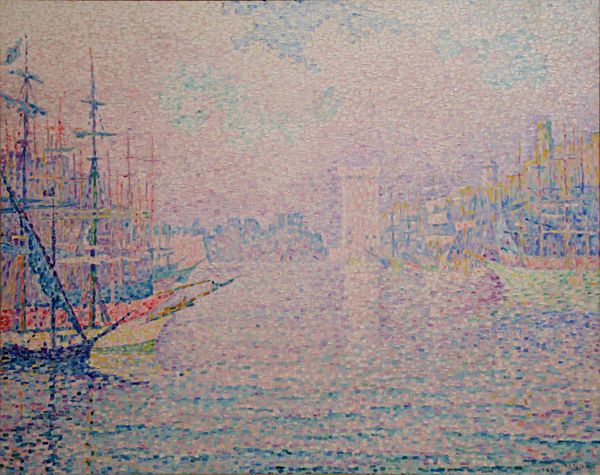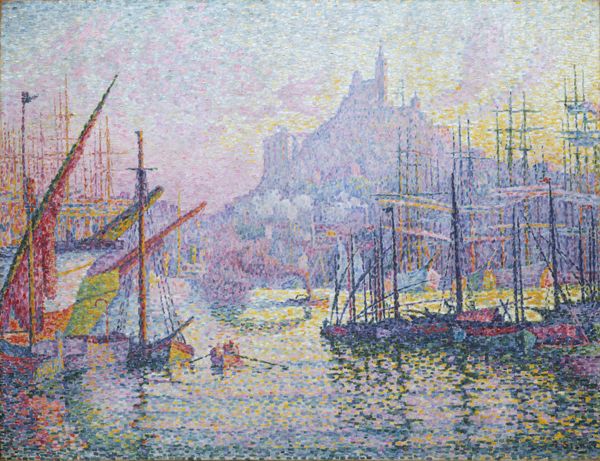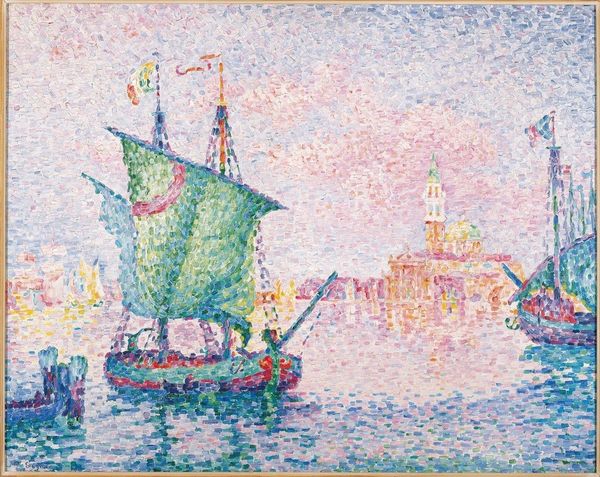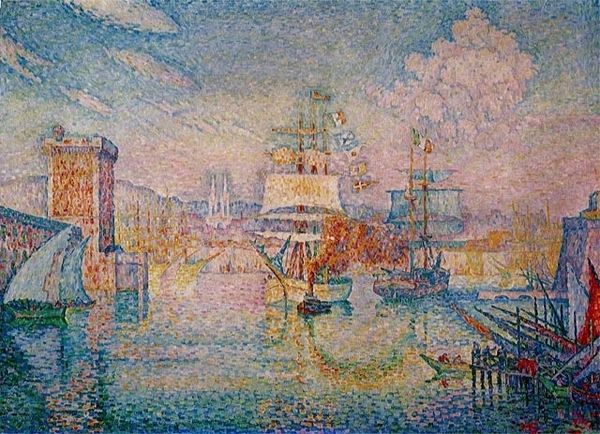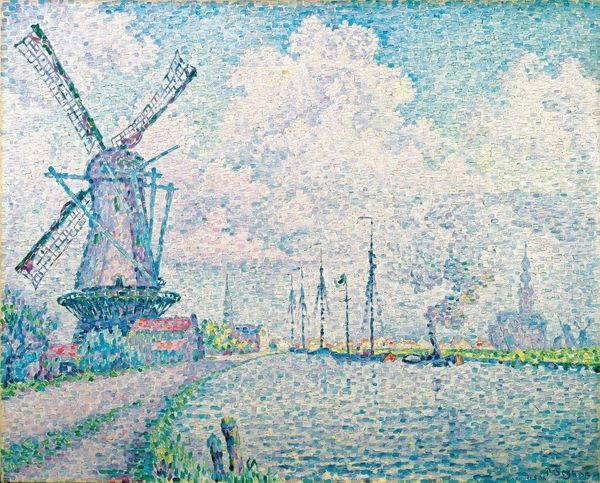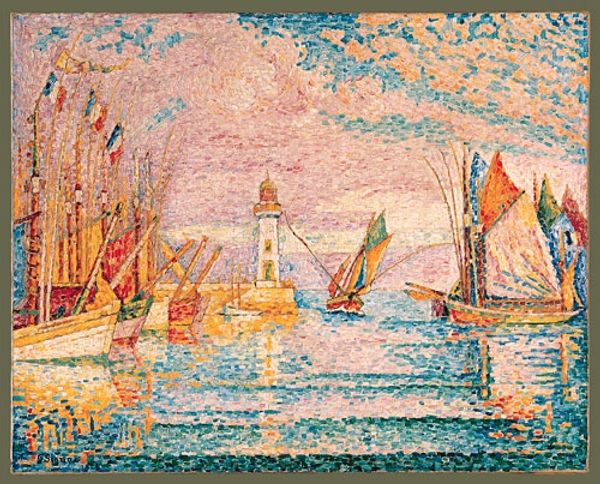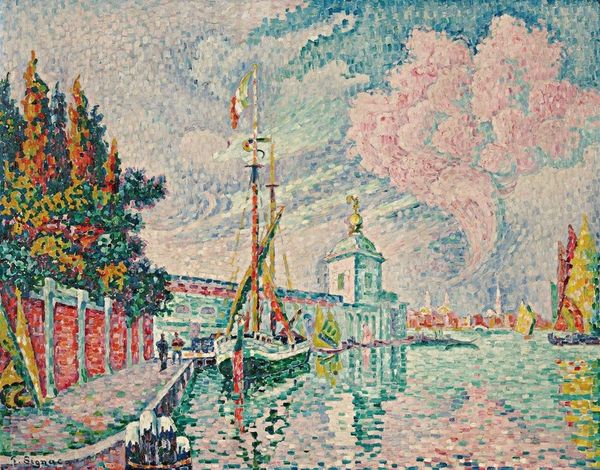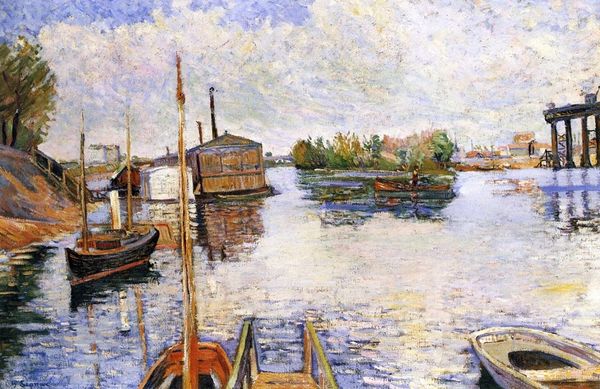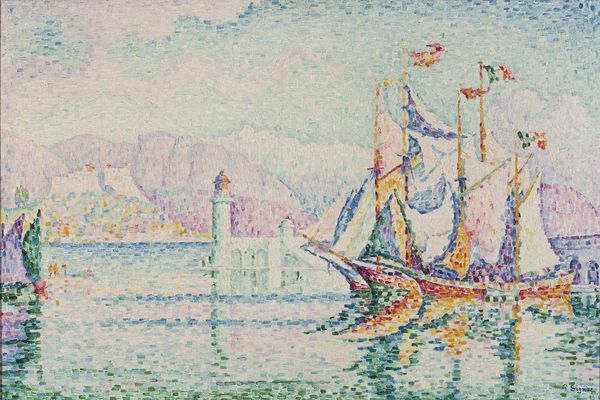
Copyright: Public Domain: Artvee
Curator: Here we have Paul Signac's "Barfleur," painted in 1931. It depicts a harbor scene rendered in the divisionist style. Editor: It shimmers. The pointillist technique, the little dabs of color, gives the entire scene a vibrant, almost watery feel, like heat rising off the canvas. Curator: Signac, a key figure in post-impressionism, embraced divisionism, applying scientific color theory to his landscapes. The way light and color are separated and then blended in the viewer's eye was quite revolutionary. Editor: Absolutely. And it is more than just color theory, you see the repetitive application of pigment—that becomes the literal labor manifest. The painting's not just an image, but an object crafted through a particular, methodical process. Curator: It’s interesting that you mention that. This view of the port is likely a commentary on the place’s transformation through its relationship to industry and commerce. Editor: Transformation indeed. The small, precise touches of oil paint speak volumes. Consider the materials, too—pigments sourced globally, processed and applied with industrial precision. This is about showing that the means of production have an aesthetic effect. Curator: The French flags fluttering from the boats can hardly be divorced from this understanding. There’s something deeply embedded about place-making here, how maritime identity, through cultural expression, becomes linked with nationhood. Editor: That relationship between the painter, subject, and nation also raises a complex set of socio-political questions too. What kind of life and labor enables Signac, this well-regarded painter, to come to this port and set his easel to canvas? Curator: Food for thought indeed. Signac’s meticulous pointillism gives us a glimpse into a time of significant artistic and social change, reflecting his enduring interest in the portrayal of public life. Editor: From a materialist perspective, examining "Barfleur" compels us to analyze artmaking itself as a form of labor, one entangled with history and economics, which invites questions of what constitutes artistic value and whose stories get told, or in this case, painted.
Comments
No comments
Be the first to comment and join the conversation on the ultimate creative platform.
